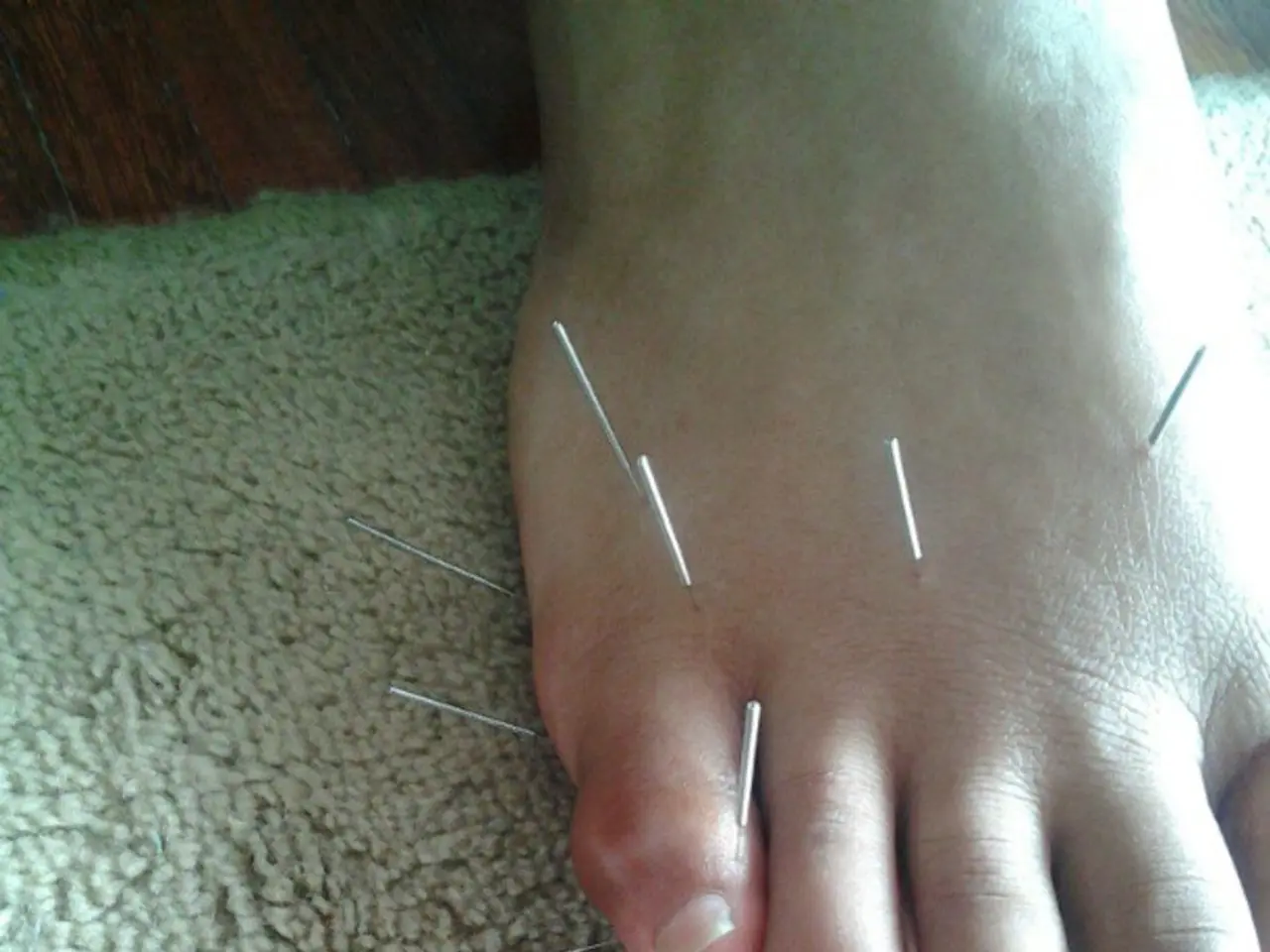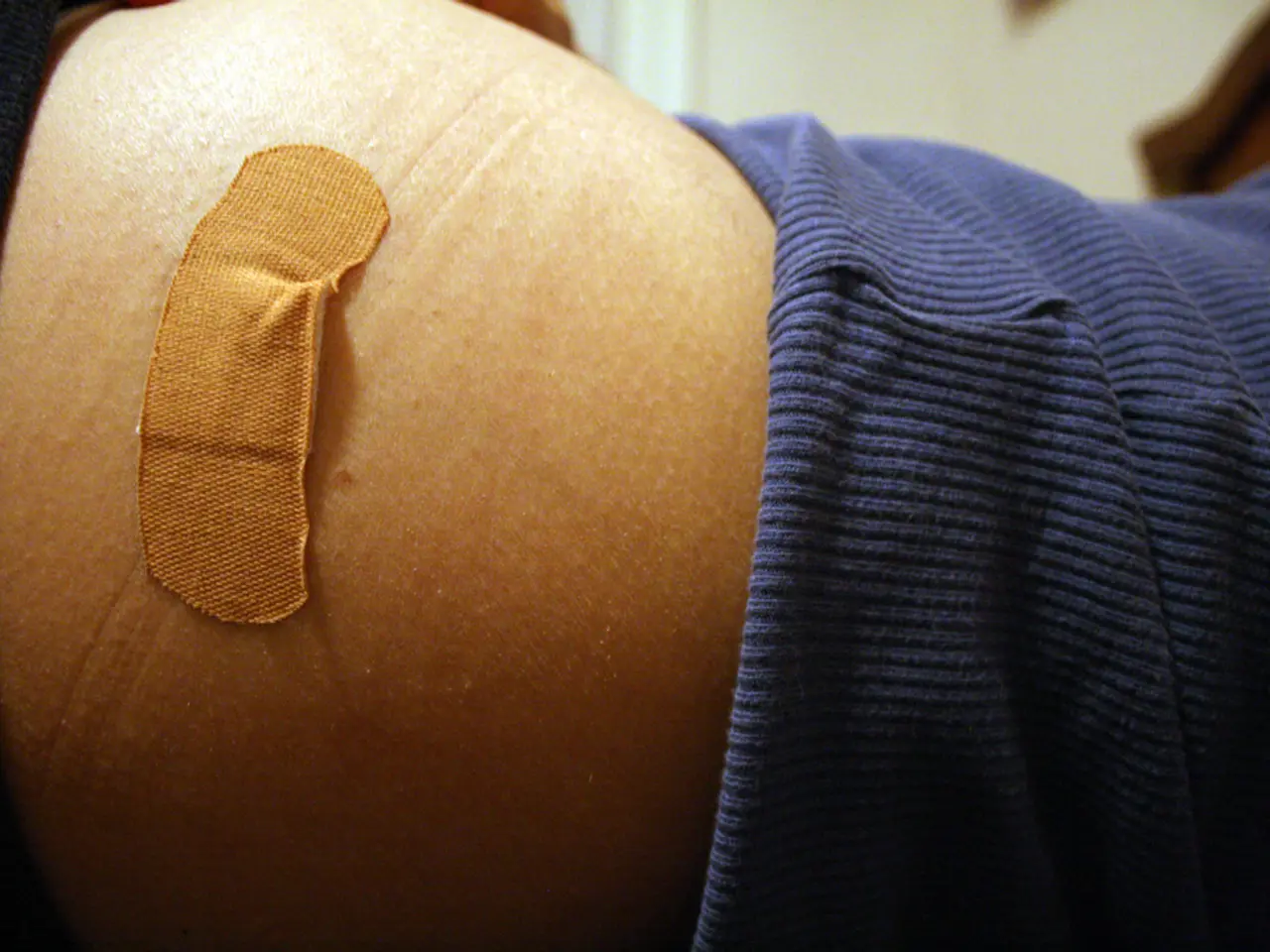SI Joint Discomfort: Identification, Remedies, and Alleviation Strategies
Sacroiliac (SI) joint pain, a type of lower back and buttocks pain that may extend down the legs, affects a significant number of individuals with chronic lower back pain. Fortunately, there are various ways to ease the symptoms at home, as well as through professional intervention.
One such method involves low-impact exercises and stretches designed to improve pelvis alignment, reduce joint compression, and release tension in surrounding muscles such as the hip flexors, gluteals, and hamstrings. Here are key recommendations supported by physical therapists and rehabilitation experts:
1. **Knee-to-Chest Stretch**: By lying on your back and gently bringing one knee towards your chest while letting the opposite hip relax and extend, you can flatten the lower back, stretch tight hip flexors and adductors, and help realign the pelvis to reduce SI joint pain.
2. **Hip Flexor Stretch**: Holding your knee to your chest while allowing the hip to come forward stretches the hip flexors and adductors and gently mobilizes the SI joint. This is particularly helpful for people with chronic SI joint instability or hypermobility.
3. **Controlled Glute Bridge**: This exercise can reduce compression on the SI joint and improve stability by engaging the glute muscles in a controlled manner.
4. **Force Couple Mobilization Using a Stick or Legs**: By holding one leg steady and pushing the other leg forward against light resistance (like a stick or using your hands), you create gentle torsion to mobilize the SI joint without aggressive stretching.
5. **Leg Pull-In Stretch**: Sitting or lying down, pull one leg towards you below the knee and press gently against your hands for a few seconds. This stretch can relieve tension and irritation around the SI joint.
6. **Buttocks Rolling and Stretching**: Support yourself with your hands near the buttocks and roll the buttocks by bending and stretching one leg. This helps release tension in the gluteal muscles, which commonly contribute to SI joint pain.
7. **Hamstring and Hip Flexor Stretches After Sitting**: These muscle groups often shorten after prolonged sitting, worsening SI joint issues. Stretching these muscles regularly helps prevent and release SI joint dysfunction.
These exercises should be performed about 3 times per week, allowing rest days in between for recovery. Choose exercises that do not increase your pain and modify or stop if discomfort worsens.
Medication may be necessary for SI joint pain that persists despite self-care and exercises. Pregnant women may experience SI joint pain due to changes in hormone levels and relaxation of the ligaments surrounding the pelvis. In such cases, it is essential to consult a doctor before trying any stretches or taking medication.
In addition to self-care and exercises, physical therapy can benefit people with SI joint pain. A doctor can diagnose SI joint pain through a physical exam, medical history review, imaging tests, and an SI joint block. In severe or unresponsive cases, surgical procedures such as radiofrequency ablation, peripheral nerve stimulation, and SI joint fusion may be recommended.
It is advisable to consult a physical therapist for personalized guidance and to ensure correct form and safety when performing these exercises. With the right approach, individuals with SI joint pain can find relief and manage their symptoms effectively.
- The knee-to-chest stretch, a recommended exercise for sacroiliac joint pain, flattens the lower back and stretches tight hip flexors to potentially help alleviate the discomfort.
- The science of health-and-wellness supports the hip flexor stretch as a method to relieve tension around the sacroiliac joint, particularly beneficial for people with chronic SI joint instability or hypermobility.
- For women experiencing sacroiliac joint pain during pregnancy, it's essential to seek advice from a doctor before trying stretches or considering medication due to changes in hormone levels and relaxation of the pelvis ligaments.
- In some cases of persistent sacroiliac joint pain, professional intervention such as physical therapy may be necessary. A doctor can diagnose the issue through various methods and may propose surgical treatments like radiofrequency ablation, peripheral nerve stimulation, or SI joint fusion in rare, severe cases.




